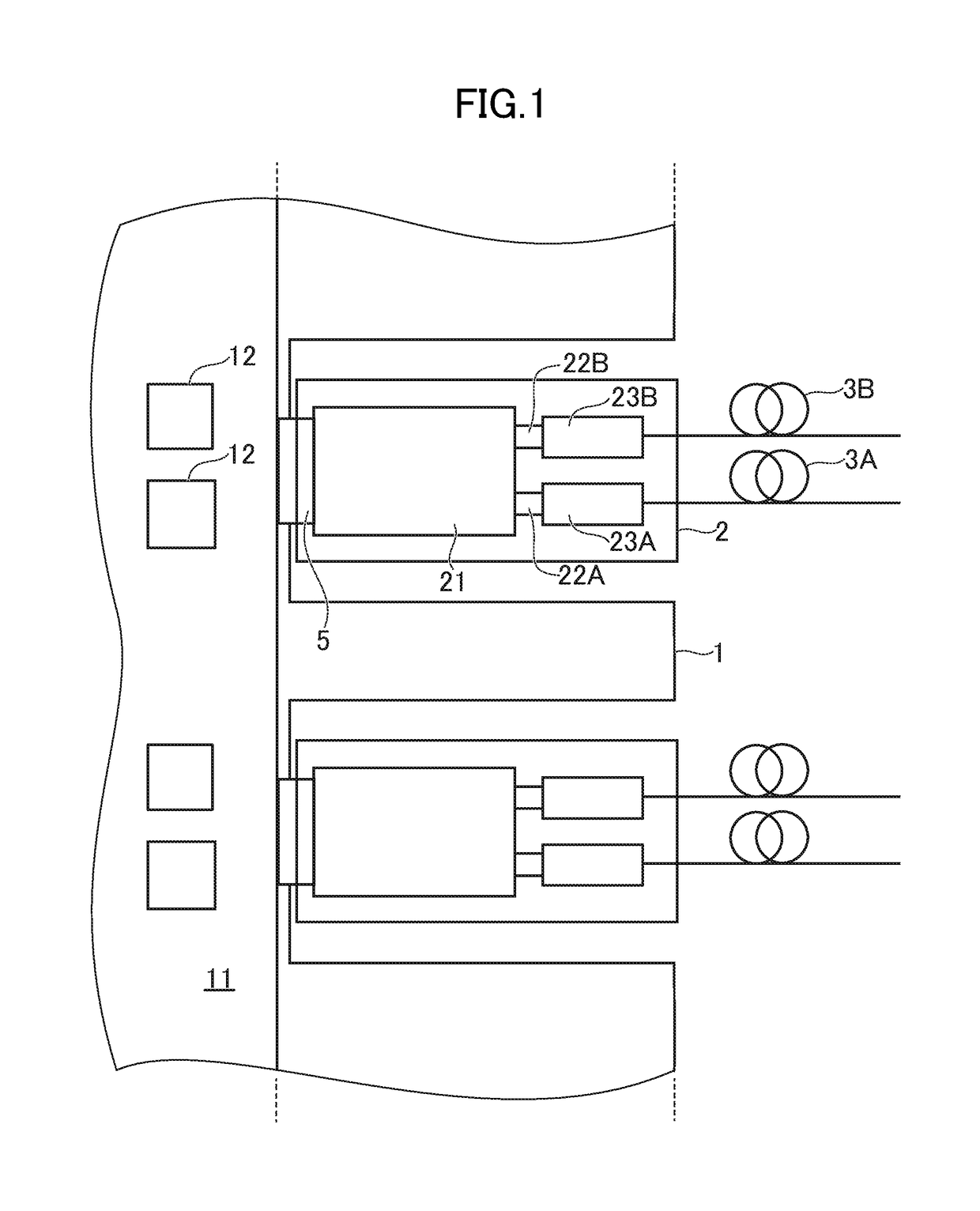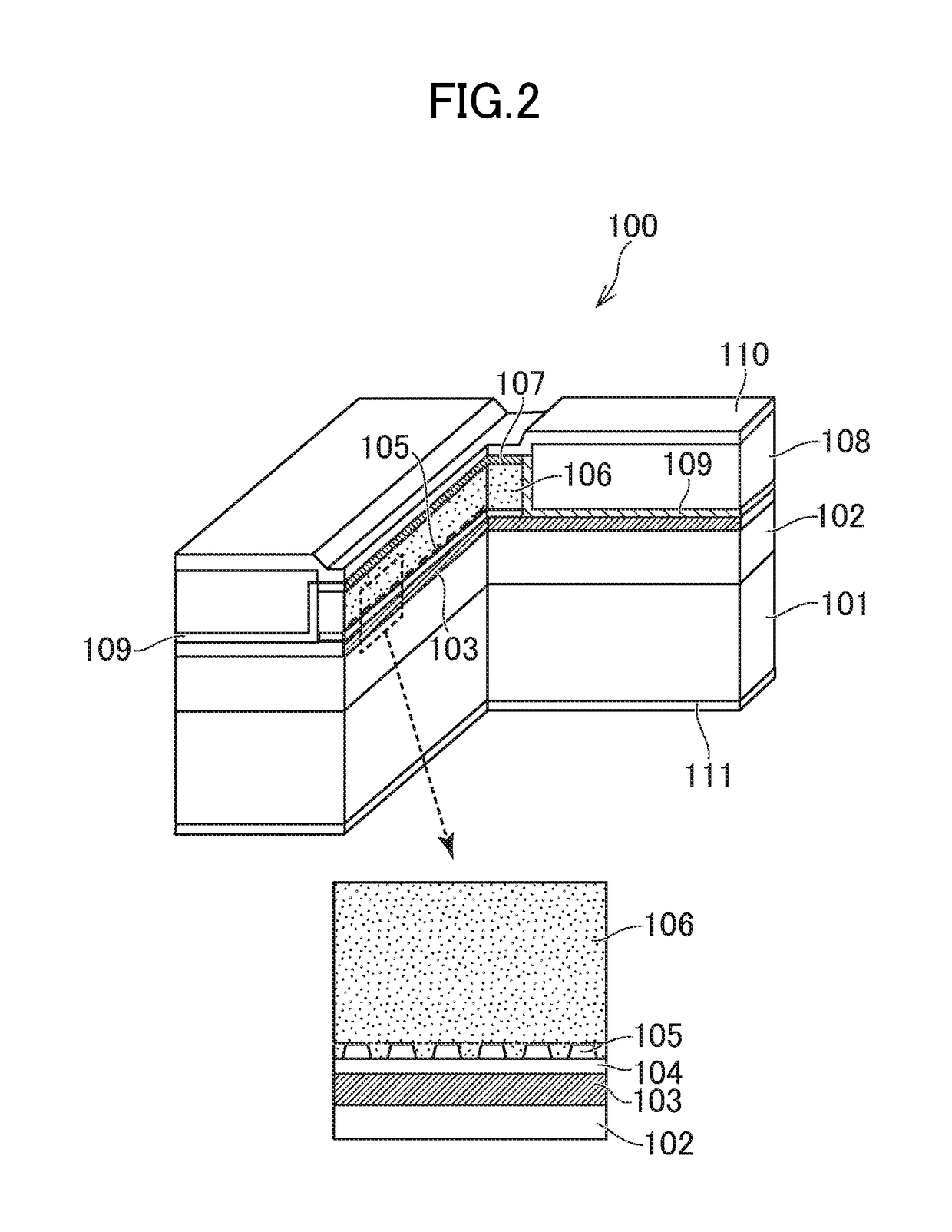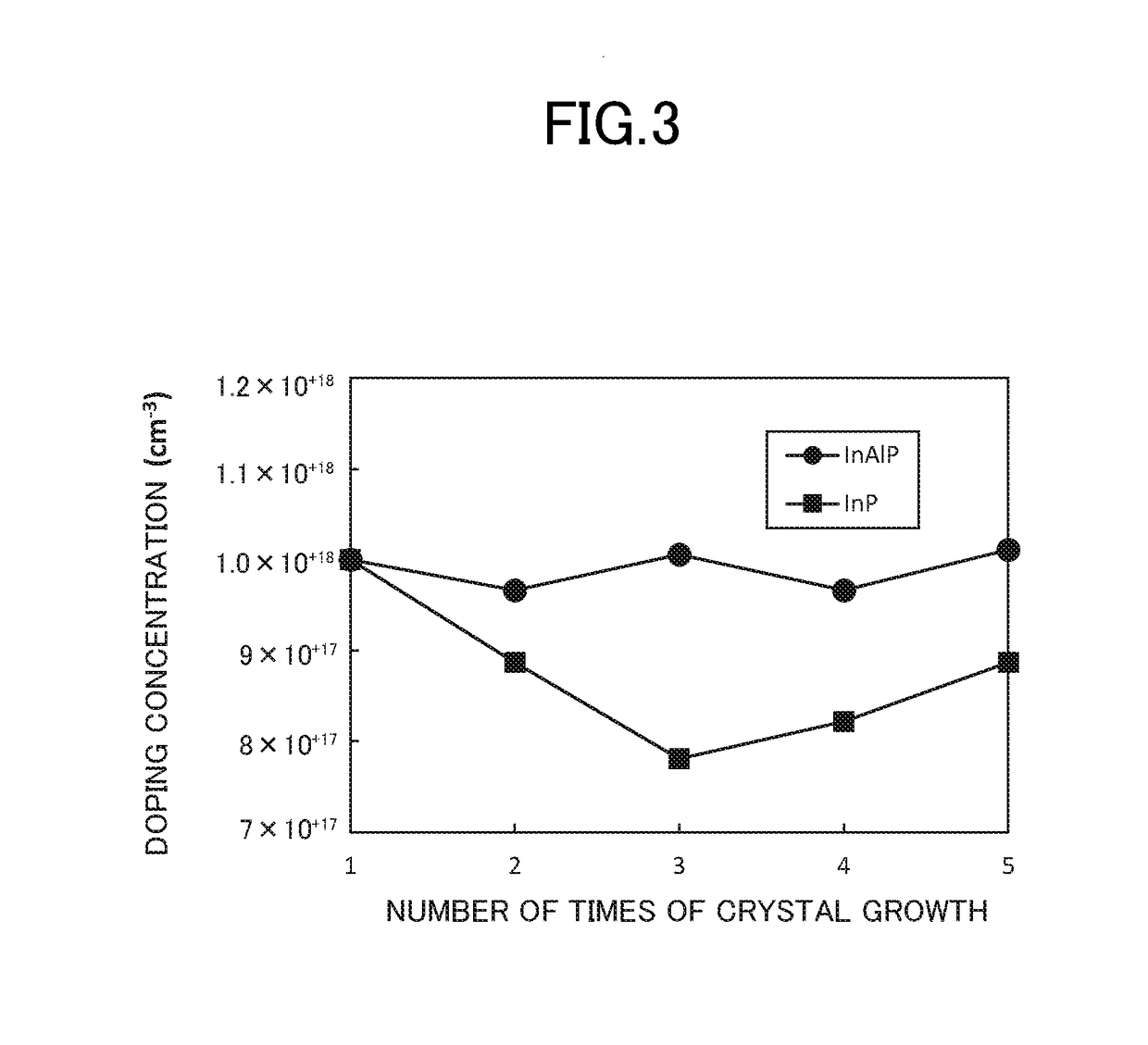Optical semiconductor device, optical subassembly, and optical module
a technology of optical subassembly and optical semiconductor, applied in the direction of semiconductor lasers, semiconductor laser structural details, instruments, etc., can solve the problems of deteriorating manufacturing yield, low amount of dopant material to be supplied, and precise control, so as to reduce the variation in supply of dopant material and cost
- Summary
- Abstract
- Description
- Claims
- Application Information
AI Technical Summary
Benefits of technology
Problems solved by technology
Method used
Image
Examples
first embodiment
[0029]FIG. 1 is a schematic view of the structure of an optical transmission equipment 1 and optical modules 2 according to a first embodiment of the present invention. The optical transmission equipment 1 has a printed circuit board (PCB) 11 and an integrated circuit (IC) 12. The optical transmission equipment 1 is, for example, a large capacitor router or switch. The optical transmission equipment 1 has, for example, a function as an exchanger and is disposed in a base station or the like. The optical transmission equipment 1 has a plurality of optical modules 2 and receives data (a reception electric signal) from the optical module 2, determines which data is to be sent to where, using the IC 12 or the like, generates data for transmission (a transmission electric signal), and sends the data to a relevant optical module 2 via the printed circuit board 11.
[0030]The optical module 2 is a transceiver having a transmission function and a receiving function. The optical module 2 inclu...
second embodiment
[0081]An EA modulator integrated semiconductor laser device 200 according to the second embodiment of the present invention is an optical semiconductor device including a laser unit 200A, a modulator unit 200B, and a light waveguide portion 200C, all being monolithically integrated on a semiconductor substrate, in which the laser unit 200A is a Distributed Feedback (DFB) semiconductor laser device, and the modulator unit 200B is an EA modulator. The EA modulator integrated semiconductor laser device 200 according to this embodiment has a buried-hetero structure.
[0082]FIG. 7 is a bird-eye's view of the EA modulator integrated semiconductor laser device 200 according to this embodiment. The main characteristic of the EA modulator integrated semiconductor laser device 200 according to this embodiment lies in the structure of the p-type clad layer, similar to the first embodiment, in which the p-type clad layer includes one pair of a p-type InP layer and a p-type InAlP layer.
[0083]In th...
third embodiment
[0092]FIG. 8 is a cross sectional view of a PIN-type diode 300 according to a third embodiment of the present invention. A PIN-type diode according to this embodiment is an optical semiconductor device that is a semiconductor light-receiving element, whereas the optical semiconductor devices according to the first and second embodiments are semiconductor light-emitting elements. The main characteristic of the PIN-type diode 300 according to this embodiment lies in the structure of the p-type clad layer, similar to the first and second embodiment, in which the p-type clad layer includes three pairs of p-type InP layers and p-type InAlP layers.
[0093]Semiconductor multilayers including an n-type InGaAs contact layer 302, an n-type InP clad layer 303, an n-type InGaAsP SCH layer 304, an intrinsic InGaAs light absorbing layer 305, a p-type InGaAsP light absorbing layer 306, a p-type clad layer 307, and a p+-type InGaAs contact layer 308 are formed on a semi-insulating InP substrate 301. ...
PUM
 Login to View More
Login to View More Abstract
Description
Claims
Application Information
 Login to View More
Login to View More - R&D
- Intellectual Property
- Life Sciences
- Materials
- Tech Scout
- Unparalleled Data Quality
- Higher Quality Content
- 60% Fewer Hallucinations
Browse by: Latest US Patents, China's latest patents, Technical Efficacy Thesaurus, Application Domain, Technology Topic, Popular Technical Reports.
© 2025 PatSnap. All rights reserved.Legal|Privacy policy|Modern Slavery Act Transparency Statement|Sitemap|About US| Contact US: help@patsnap.com



